




Small, handy and still an indispensable part of the retail trade: The hand labeller – also known as a price labeller or hand labeller – is an inconspicuous but crucial helper in everyday sales. But where does this practical device actually come from, which prints and sticks prices, batch numbers or promotional information on labels at lightning speed? A look at history reveals that the development of price labelling is closely linked to the transformation of retail – and to a name that is still a leader in this field today: Meto.
On February 16, 1918, Adolf Metzger and Oskar Kind founded Meto in Cologne. The company name originated from the names of the founders and also reflected their shareholdings. However, Metzger, who owned 75 per cent, left the company in 1920, and Oskar Kind became the sole shareholder.
In the early years, labels and hand-labeling solutions – for which Meto is now known worldwide in the trade and which still shape the brand's success today – were not yet part of the portfolio: Meto-Schnürung GmbH initially manufactured packaging apparatus with wire binding technology as well as staplers for cartons. From 1921, Meto supplied the Deutsche Reichspost. The company was awarded the contract thanks to a special device that bent the edges of flat metal belts – an innovation that not only provided more stability but, above all, significantly reduced the risk of injury.

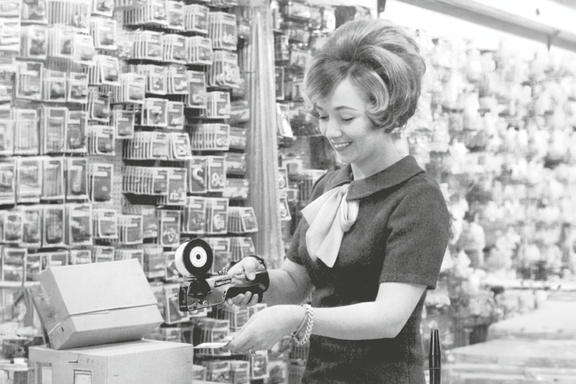
With the economic boom of the 1950s, Meto began to devote itself to new topics: initially semi-automatic dispensers for packaging adhesive strips, but then finally followed in 1959 one of the most important milestones in the company's history: company founder Oskar Kind brought the idea from the USA to apply labels to products in a simple and efficient way, and in 1959 invented the first hand-labelled device called "Jedermann".
For the first time, this device combined the printing and application of labels in a single operation – a real revolution in retail. Before the introduction of this first mechanical price labeler, prices were often written by hand on signs, which was error-prone and time-consuming. Now, however, large inventories of goods could be uniformly labelled in record time – in the spirit of the economic upswing at that time.
The birth of the hand-held labelling device or price labeler followed directly on the occasion of the introduction of self-service in retail in the 1950s with a new way of presenting goods and selling in a customer-oriented manner.
The demand for the first price labeler was enormous. By 1970, around 450,000 Jedermann devices had been produced and sold – both nationally and internationally. Meto thus controlled over 90 per cent of the market for hand and price labelers.
The Meto Z59 Jedermann hand-labeler was delivered in velvet-lined packaging. It was almost entirely made of metal. A roll holder served as an unwinding device and guided labels through the labeler via a carrier belt, which transported the labels further while at the same time activating the pressure when the handle was operated. When the handle was released, the ink pad was pushed directly under the metal stamp and thus supplied the printing characters with ink. The stamp consisted entirely of iron wheels and rollers. These wheels made it possible to set the respective numbers by turning. From today's perspective, the device was heavy and unwieldy – but at the time, it was unique and trend-setting.
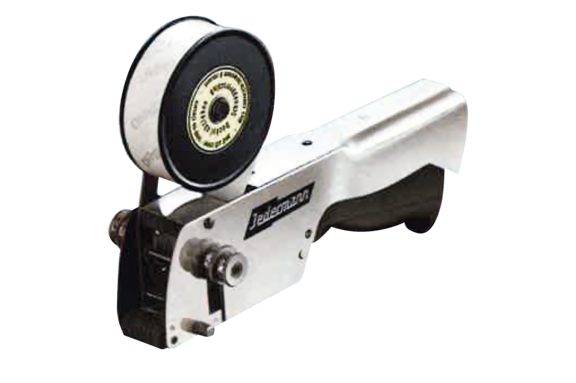
The following decades brought numerous technical improvements and simplified the process of manual price labelling:
Ergonomically shaped handles provided more comfort.
Plastic components reduced the weight of the labelers: devices such as the NF series introduced in 1980 – the first plastic labelers – set new standards and brought a significant weight advantage compared to the earlier series.
New transport methods for label carrier tapes: Punching in carrier tapes improved the feed rate and still guarantees the correct position of the label under the printing belt today.
Pressure point technologies ensured that the printing tape was always pressed onto the label to be printed with the same force.
In 1980, pressed rubber bands were installed in the NF80 for the first time as pressure belts for maximum durability.
From 1981 to 1982, laser-cut printing ribbons were installed in the NM 1 and NM2 series of devices for maximum precision.
New label sizes and devices with multiple print lines opened up new application possibilities. Additional information such as article numbers or best-before dates could now also be displayed with several lines – a clear advantage, for example, in the food trade.
With the spread of barcode technology in the 1980s, the time of manual labelling seemed to be over, but new areas of application emerged: In industry, logistics, healthcare and community catering, the manual labeler is now used to, for example, document production processes and sterilization or label food according to HACCP.
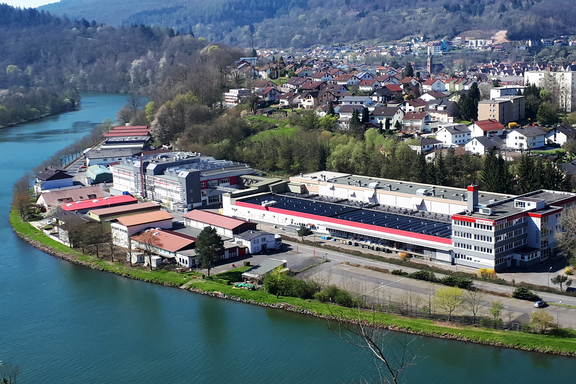
In 1999, Meto became part of Checkpoint Systems, which opened up new opportunities and synergies. The following years saw the introduction of numerous new products – including the Mega Meto series, which processes label formats up to 36 x 35 mm, and the innovative Meto Eagle hand-held labeler, whose further development Meto Expert is now state-of-the-art. Continuous progress has led to manual and price labelers that are easy and comfortable to use, ergonomically shaped and work precisely.
With digitalization, electronic price tags have found their way into retail. Nevertheless, the classic price labeller has not lost its raison d'être. Especially for special promotions or products that cannot be standardized, the manual solution still offers great flexibility and independence.
Today's modern Meto devices range from simple dispensing and storage devices for a wide range of label types and sizes to manual labelers with up to three print lines and 36 print digits. They are used in:
Price labelling in retail
Campaign and advertising awards
Food declaration
Weatherproof exterior marking
Pagination in manufacturing processes
Article surveillance with electromagnet technology
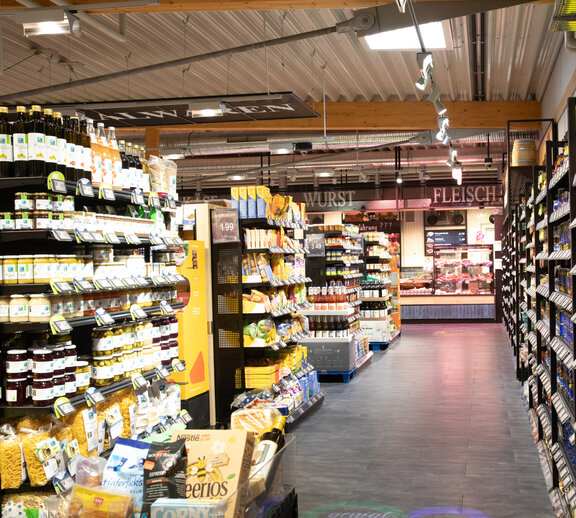
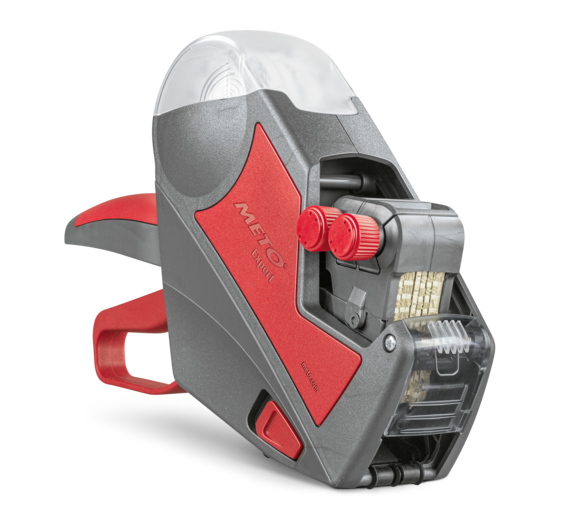
The current appliance series Expert, Classic and Basic cover a wide range of requirements. The Expert series, in particular, impresses with its high quality, ergonomics and flexibility – complemented by comprehensive service:
Advice online or in-person
Product customization
Repair service for permanent support
Meto is considered a pioneer and innovation driver in the field of price labelling. The more than 50-year history of the price labeller shows how a simple invention has changed retail. And even in times of digitalization, the classic price labeler or manual labeler remains an important part of the sales strategy and economic processes. Companies that cleverly combine both modern and traditional methods can optimize their operations while increasing customer experience. As far as the future of the price labeler is concerned, one can only say that Meto is further developing this practical everyday helper – with a deep understanding of the needs of retailers.